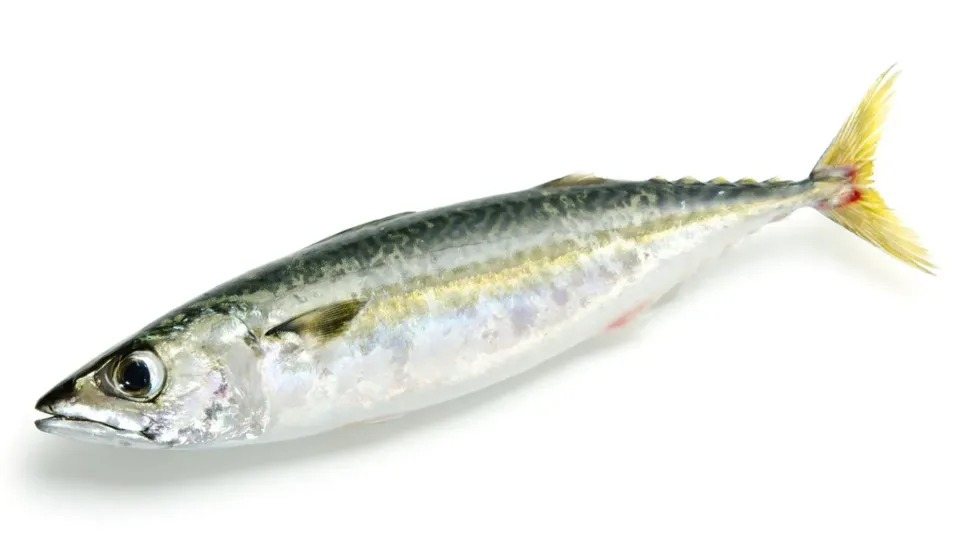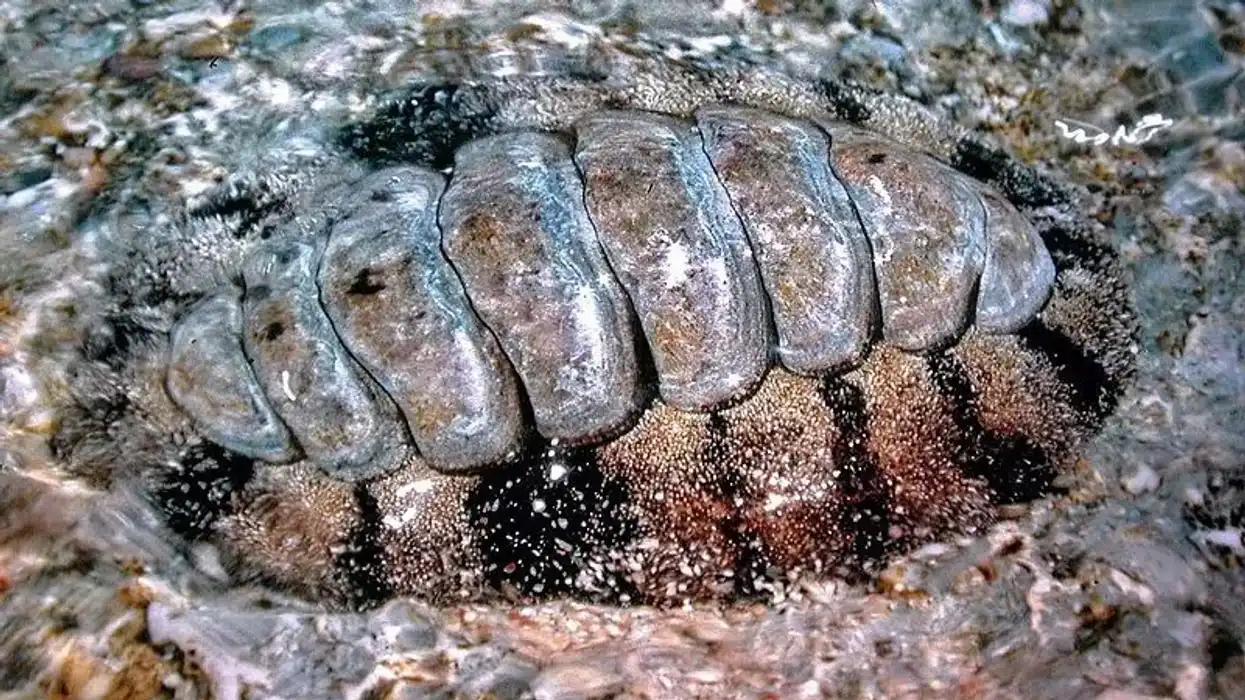Are you fond of eating seafood? All seafood lovers will be well acquainted with mackerels, salmon, and tuna, high in omega and saturated fats. Here we researched and added exciting facts about Chub mackerel fish, which belong to the mackerel group.
The Chub mackerel are known as Pacific mackerel, Pacific Chub mackerel, and Striped mackerel. Chub is one of the oldest mackerels; fossils are found in the Pliocene of Italy 3-2.2 million years ago. This fish closely resembles the Atlantic Chub mackerel.
Most of the mackerels are in silver coloration. Fishermen call this fish a hard head. These Pacific mackerels are distinguished from Atlantic Chub mackerels by big black eyes and dorsal fins.
In Chubs, dorsal fins are closer with 9 or 10 spines in their first dorsal fins, whereas the Atlantic Chub mackerel has 11 or more spines. It has a dorsal pattern similar to that of the sun and waves.
This pattern helps to camouflage itself to hide from its predators. When in danger, this fish moves close to the water's surface and mixes with the sun's lighting. This technique helps to stay away from predatory birds.
Read on to learn more, and if you like this article, take time to know about John Dory and Koi.
Chub Mackerel Interesting Facts
What type of animal is a Chub Mackerel?
Chub mackerel is an old species of fish that belongs to the tuna and mackerel family Scombridae. This Pacific mackerel is a great staple oily fish people love to include in their diet because they are rich in proteins and omega-3 fatty acids.
What class of animal does a Chub Mackerel belong to?
Chub mackerel belongs to the Actinopterygii class. The members who belong to this class are ray-finned fishes. They are called ray-finned fishes because their body is a web of bony or horny rays.
How many Chub Mackerels are there in the world?
The exact population of these mackerels is unknown, but it is one of the fishes with commercial value and is potentially stable in its habitats.
Where does a Chub Mackerel live?
These are common, abundant species in Indo-Pacific. These species are widely spread and distributed in the Northeastern, Southeastern, and Northwestern Pacific. They range from Central Mexico to Southeastern Alaska. They also migrate long distances in the ocean and across the Mediterranean. They also school with other types of mackerel and pelagic species.
The Chub mackerel found in the Pacific region is radiant green with vertical stripes. Whereas Atlantic Chub mackerel, which was wrongly assumed as a Chub mackerel Scomber japonicus, is found in the Mediterranean Sea, the Black Sea, and the Atlantic Ocean.
What is a Chub Mackerel's habitat?
These fish is pelagic fish found in both temperate and tropical seas. Chub mackerels are generally found within 20 mi (37 km) in the coastal waters within a temperature range of 50-70 °F (10 -22 °C).
Young ones are found on sandy beaches. Adults stay in deep waters 1000 ft (300 m) during the daytime and come up to open water at night time.
Who do Chub Mackerels live with?
In general, all mackerels are diurnal animals and migrate in large schools for long distances across the ocean.
How long does a Chub Mackerel live?
The average life span of Chub mackerel range between 13-15.6 long years in the wild. The maximum recorded lifespan of these species is 18 years.
How do they reproduce?
The reproduction in the mackerel depends upon the atmosphere and temperature they are located. Generally, the mackerel are broadcast spawners, which means external fertilization takes place in the open water surface when both egg and sperm are released into the water surface. In Chub mackerel, the spawning takes place at the feasible temperatures around 59-68 °F.
Females and males gain sexual maturity by 821 days. Females release nearly 100,000-400,000 eggs during the entire breeding season.
The eggs usually hatch within four to five days. The spawning season near Asia is between March-October and occurs between April-September in California. In cooler months, these species shift to deeper water and relax.
Once eggs are released, they fertilize with the sperm and form a larva that develops into a new individual. Both the eggs and larvae float free on the water. Juveniles stay near the coast till they matured into adults
What is their conservation status?
As per the International Union for Conservation of Nature (IUCN), the conservation status of the Chub mackerel is Least Concern. Though it is a widely caught species, its population is stable in its ranges.
Chub Mackerel Fun Facts
What do Chub Mackerels look like?
The Pacific Chub mackerel has an elaborately designed body that helps move at speed. They have a silver background with greenish tinges; the upper back is covered with blackish zig-zag lines.
They have a well-developed swim bladder attached to the esophagus. It has two large eyes with sharp teeth and two fins; the first dorsal fin has 9 or 10 spines. It has a deeply forked caudal fin with two small keels.
How cute are they?
Fishes are always cute aquatic creatures people admire. It is a pacifying experience watching the fish swimming in the big water bodies with their gills and fins.
The Chub mackerel, Scomber japonicus, is a cute fish with dark stripes and a deeply forked tail. It has huge demand in the food industry globally, so it is considered an economically important fish rather than cute species.
How do they communicate?
There is no helpful information on how these Pacific mackerels communicate. But in general, these fishes communicate through sounds, motions, smell, color, and bioluminescence. Why do they communicate? The answer is simple: to alert the group members about predators and during spawning.
How big is a Chub Mackerel?
The length of this Chub mackerel is 8-14 in (20-36 cm), weighing around 2-4 lb (0.9-1.8 kg). Its length is comparatively less than the Atlantic Chub mackerel (25.5 in (64.8 cm)
How fast can a Chub Mackerel swim?
In general, all the mackerel sustained swimmers. The swimming speed of the Pacific mackerel is 2.05 mph (3.3 kph) and the burst speed is 5.13 mph (8.3 kph). Whereas the speed of the Atlantic Chub mackerel is 2.19 mph (3.5 kph) with a burst speed of 12.3 mph (19.8 kph).
How much does a Chub Mackerel weigh?
This species is small in size. The Chub or Pacific mackerel weighs around 2-4 lb (0.9-1.8 kg). The maximum weight recorded is 6.39 lb (2.9 kg).
What are the male and female names of the species?
There are no specific names for these mackerel pacific species. In general, males are called male Chub mackerel, and females as female Chub mackerel.
What would you call a baby Chub Mackerel?
There are different names for each stage of the fish. The eggs hatch and develop into larvae with the help of a yolk sac attached for their nourishment. When they technically become independent of feeding themselves, the young fish is named fry. Fry undergoes several changes and becomes fingerling.
What do they eat?
At the larvae stage, Chub mackerel feeds mainly on copepods and rotifers. Juvenile Chub mackerel feeds on zooplankton and adult Chub mackerel feeds on crustaceans, fishes, and squids, mysids (small shrimps), and euphausids. This species is constantly in competition for food with other fishes.
Are they eaten by humans?
Yes, humans like to include mackerel (Pacific) in their diet because of is rich in omega-3 and unsaturated fatty acids. Pacific mackerel also gives good nourishment to the skin.
Would they make a good pet?
No, this mackerel is not a good option as a pet for fish keepers. As they move in large schools and constantly move in vast ocean waters, it may not be possible to create such an aquatic environment with human efforts.
Did you know...
These fishes are also a good option as pet food.
These mackerel Pacific are caught all year round, but the peak season is between June-November. Fishing can be carried out on both sides of North America. The maximum number of fisheries are commonly found in California and Mexico.
How to catch this Pacific mackerel? The best method adapted to catch these Pacific mackerel is using round-haul gear such as purse seines, using ultralight spinning rigs, bucktails, mackerel jigs, or roostertail spinners. The gear helps catch the fish at the surface level, so the bottom habitat population is not affected.
Is it safe to eat Chub Mackerel?
Chub mackerel is an oily fish rich in Omega 3 fatty acids and high in proteins. Most people prefer this fish, especially recommended for growing children and pregnant ladies. However, you should be cautious about its mercury levels, so a moderate quantity is recommended.
This fish is caught and sold as fresh, canned, frozen, smoked, and salted as a pickle. This fish can be included in your diet in many ways, such as baked, boiled, and fried.
It is a popular dish in a Sicilian culture consumed raw just by marinating with oil, pepper, lemon, and salt or simply adding two spoons of canned Chub mackerel to your favorite pasta or veggies. Sounds yummy!
Comparisons with other Mackerel
Chub mackerel is differentiated from any other mackerel by the number of finlets, usually four to six.
Difference between Common and Chub mackerel: Common/Normal mackerel is an abundant species with 12 in (30 cm) in length with silver background and blue and green color combination above with dark zig-zag lines upper part. It has two dorsal fins.
Found on two coasts of the North Atlantic Ocean, from Spain to Norway and North Carolina to Labrador, it lacks an air/swim bladder.
On the other hand, the Pacific mackerel has more dark lines than the common mackerel with dark green and vertical lines. This fish has an air bladder, and its population is significant on the coast of California.
Difference between Pacific jack mackerel and Chub mackerel: The Pacific jack mackerel is large fish that grows to a maximum length of 31.8 in (81 cm), commonly seen below 21.6 in (55 cm). It inhibits both onshore and offshore environments.
They are found on the Western coast of North America, from Alaska in the north to the Gulf of California in the south. Chub mackerel has twice the fat content than Jack mackerel and has an air ballader.
Here at Kidadl, we have carefully created lots of interesting family-friendly animal facts for everyone to discover! Learn more about some other fish from our gilt head bream facts, and Achilles tang fun facts pages.
You can even occupy yourself at home by coloring in one of our free printable chub mackerel coloring pages.










